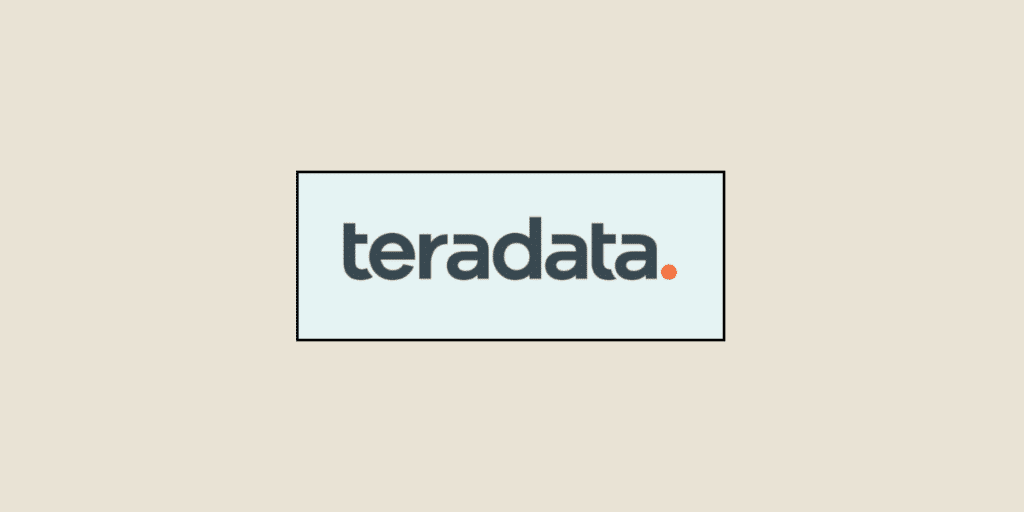Thanks to its massively parallel architecture, Teradata can handle huge volumes of data. And it does so with unprecedented efficiency, since the platform regularly adds advanced features that take analysis to a new level. Find out more about the Teradata system, its formulas and advantages.
What is Teradata?
Teradata is an open source database management system for storing, managing and analyzing large volumes of data. Scalable and robust, Teradata is used in all business sectors, for customer data management, master data management, finance management, supply chain management and more. This is precisely why the world’s leading companies use Teradata. Not to mention that the platform has even been named a leader in the Gartner® Magic Quadrant™ in the Cloud DBMS category.
Good to know: Teradata’s history goes back to the late 1970s, when it was just a division of NCR corporation. It wasn’t until 2007 that the firm really took off. Since then, it has made a series of acquisitions, including Aster, Appoxee and San Diego-based StackIQ.
What are Teradata's features?
To maintain its leadership position, Teradata has been able to adapt by offering solutions that are increasingly adapted to companies’ needs in terms of data management and analysis. As a result, the platform now offers 3 main products:
Data Fabric
This relational database makes it possible to manage huge volumes of data and run complex analytical queries.
Here are just some of the features available:
- Query Fabric: Teradata connects queries to limit data flows.
- Modern data stack : the platform is based on a modern technology stack enabling companies to take advantage of its performance and scalability.
- Data sharing : whether with sales, data scientists or decision-makers, data sharing is simplified, as each stakeholder can access the information they need, when they need it.
- Data products: they enable end-to-end business processes to be optimized by promoting the reuse of data by all.
Data Fabric’s multiple functions make it easy to integrate and deploy data solutions.

Clearscape analytics
These are advanced data analysis features, such as machine learning and artificial intelligence. In just 3 steps, Clearscape Analytics lets you scale your Machine Learning models even faster and more efficiently:
- Data preparation: enabling you to spend more time creating value, reducing costs and delivering better predictions.
- Model training: you can train any model, thanks to its vertical and horizontal scaling capabilities.
- Model deployment: millions of models can be deployed in a matter of days. And with minimal human intervention.
Vantage cloud
This analytics platform based on a native cloud architecturecombines the data lake, data warehouse, data engineering, artificial intelligence and machine learning.
The result: faster, more accessible and less expensive analyses. And on a massive scale. With this advanced analytics solution, Teradata stimulates innovation and value creation, while strengthening collaboration between teams.
Why use Teradata?
Gartner Magic Quadrant, Forrester, IDC Marketscape, IDC Fintech Rankings… Teradata is multi-awarded by renowned institutes. And with good reason, the platform offers its users a host of advantages:
- Agile data integration: with its Vantage platform, Teradata offers hybrid cloud products that simplify your analytical journey.
- Efficient data warehouse management : Teradata is based on a massively parallel processing architecture. This parallelism means you can perform multiple data warehousing operations simultaneously. This means you can divide heavy tasks into smaller ones for greater efficiency.
- Hybrid integration: while the cloud is becoming increasingly important within organizations, many still retain some data on site. They therefore have a hybrid architecture. Fortunately, with Teradata, it’s possible to manage all data, regardless of location.
- A scalable approach : the platform is constantly adding new features to enable users to get the most out of the solution.
- Open architecture: enabling new devices to be integrated very quickly. No matter how your business evolves, Teradata always knows how to adapt.
- High-volume data management : thanks to its linear elasticity, the platform is capable of handling over 50 petabytes of data. To achieve this, it adds nodes to boost system performance. Not to mention its ability to handle a wide variety of queries.
- Optimal compatibility: as well as being compatible with Unix, Linux and Windows operating systems, Teradata integrates seamlessly with a wide variety of Business Intelligence tools.
- Cost optimization:the same data can be used for different deployment options. This optimizes the total cost.

Join DataScientest and take control of your data
While Teradata is indispensable for managing large volumes of data, it is only one tool.
You still need to master data processing or analysis, Machine Learning, Deep Learning and so on. All these skills are taught by our team at DataScientest. Through our training courses, you’ll become an expert in Big Data. Find out more about our programs.










